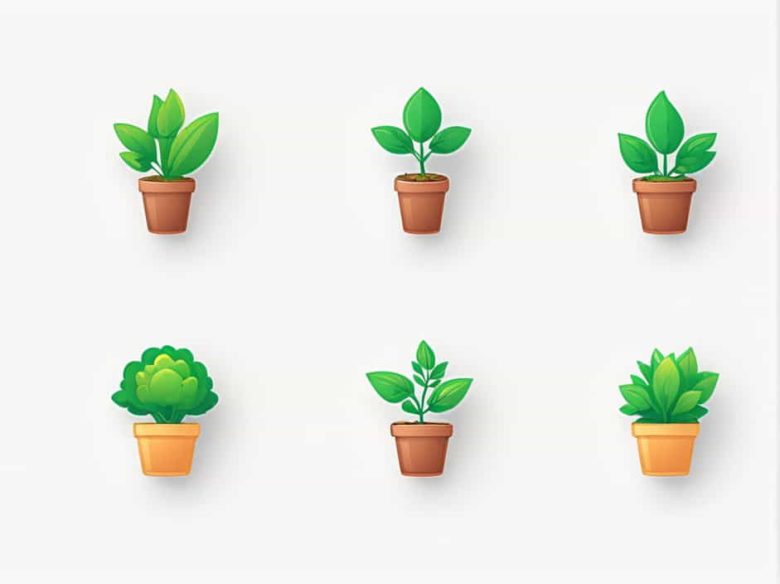Photosynthesis is the process by which plants convert sunlight into energy. This process is essential for plant growth and oxygen production making it crucial for life on Earth. Without photosynthesis plants wouldn’t be able to create their own food and the planet’s oxygen supply would drastically decrease.
But what exactly do plants need to carry out photosynthesis? In this topic we will explore the key requirements for photosynthesis how each component plays a role and why this process is so vital.
What Is Photosynthesis?
Photosynthesis is a chemical process that occurs in the chloroplasts of plant cells. During this process plants use light energy to convert carbon dioxide (CO₂) and water (H₂O) into glucose (C₆H₁₂O₆) and oxygen (O₂). This reaction provides plants with the energy they need to grow while releasing oxygen into the atmosphere.
The general equation for photosynthesis is:
This equation highlights the main components required for photosynthesis. Let’s discuss each one in detail.
1. Sunlight (Light Energy)
Why Is Sunlight Essential?
Sunlight is the primary energy source for photosynthesis. Plants absorb light energy using chlorophyll a green pigment found in chloroplasts. This energy is then used to drive the chemical reactions that convert CO₂ and H₂O into glucose.
How Do Plants Capture Sunlight?
Plants have specialized structures to maximize light absorption:
- Leaves – The broad flat shape of leaves helps capture as much sunlight as possible.
- Chlorophyll – This pigment absorbs light primarily in the blue and red wavelengths while reflecting green light (which is why plants appear green).
Without sufficient sunlight plants cannot photosynthesize effectively leading to stunted growth or death.
2. Carbon Dioxide (CO₂)
Where Do Plants Get Carbon Dioxide?
Plants absorb carbon dioxide (CO₂) from the air through tiny openings called stomata on their leaves.
Why Is CO₂ Important for Photosynthesis?
Carbon dioxide is a key reactant in photosynthesis. It combines with water molecules to form glucose which plants use for energy and growth. Without CO₂ photosynthesis cannot take place.
Fun Fact: Increased CO₂ levels can sometimes enhance plant growth but too much CO₂ in the environment (such as from pollution) can also cause climate-related issues.
3. Water (H₂O)
How Do Plants Absorb Water?
Plants absorb water from the soil through their roots. The water is then transported to the leaves through a system called the xylem a network of vascular tissues.
Role of Water in Photosynthesis
Water plays two major roles:
- Provides electrons – Water molecules split into oxygen protons and electrons during the light-dependent reactions of photosynthesis. The electrons are used to generate energy.
- Releases oxygen – The oxygen (O₂) produced from water is released into the air making it essential for human and animal survival.
Without enough water plants wilt and cannot photosynthesize efficiently.
4. Chlorophyll (The Green Pigment)
What Is Chlorophyll?
Chlorophyll is the green pigment found in plant cells specifically in chloroplasts. It is responsible for absorbing sunlight and converting it into chemical energy.
Types of Chlorophyll
There are several types of chlorophyll but the most important ones are:
- Chlorophyll a – Found in all photosynthetic plants algae and cyanobacteria.
- Chlorophyll b – Helps plants absorb additional light wavelengths.
What Happens Without Chlorophyll?
Plants without chlorophyll cannot absorb light energy meaning they cannot produce food. This is why albino plants (plants with no chlorophyll) cannot survive on their own.
5. Proper Temperature
How Does Temperature Affect Photosynthesis?
Temperature plays a crucial role in enzyme activity during photosynthesis. If the temperature is too low the reactions slow down. If it is too high enzymes may become denatured (damaged) preventing photosynthesis from occurring efficiently.
Optimal Temperature for Photosynthesis
Most plants photosynthesize best in temperatures between 20-30°C (68-86°F). However some plants like cacti can tolerate much higher temperatures while others like alpine plants thrive in cooler environments.
6. Nutrients and Minerals
Key Nutrients for Photosynthesis
While light CO₂ and water are the main ingredients for photosynthesis plants also need essential nutrients and minerals for efficient energy production.
The most important ones include:
- Nitrogen (N) – Essential for making chlorophyll.
- Magnesium (Mg) – A key component of chlorophyll molecules.
- Phosphorus (P) – Helps in energy transfer during photosynthesis.
- Potassium (K) – Regulates the opening and closing of stomata helping CO₂ absorption.
Without these nutrients plants may experience yellowing leaves slow growth or weak structures.
Factors That Can Limit Photosynthesis
Even if a plant has all the necessary components for photosynthesis certain factors can still limit its efficiency. These include:
1. Low Light Levels
- Plants grown in shaded areas may not receive enough light for proper growth.
- In winter shorter daylight hours can slow down photosynthesis.
2. Water Shortage
- Drought conditions reduce water availability limiting photosynthesis.
- Overwatering can also harm plants by suffocating roots and preventing nutrient absorption.
3. Air Pollution
- High levels of pollutants can block stomata reducing CO₂ intake.
- Ozone damage can destroy chlorophyll reducing light absorption.
4. Extreme Temperatures
- Frost can damage chloroplasts stopping photosynthesis.
- Heat stress can cause excessive water loss leading to dehydration.
Why Is Photosynthesis Important?
1. Oxygen Production
Plants produce oxygen as a byproduct of photosynthesis. Without this process there would be no oxygen for humans and animals to breathe.
2. Food for the Ecosystem
Photosynthesis is the foundation of the food chain. Plants create glucose which serves as the primary food source for herbivores which are then consumed by carnivores.
3. Reduces Carbon Dioxide Levels
Plants absorb CO₂ from the atmosphere helping to regulate the Earth’s climate and reduce the effects of global warming.
4. Energy Storage
The glucose produced during photosynthesis is stored in plant tissues later used as energy for growth reproduction and survival.
Photosynthesis is a vital process that sustains life on Earth. Plants require sunlight carbon dioxide water chlorophyll the right temperature and essential nutrients to carry out this process efficiently.
Understanding the factors that affect photosynthesis can help farmers gardeners and environmentalists improve plant health increase crop yields and maintain ecological balance.
By ensuring plants have everything they need for photosynthesis we contribute to a healthier planet for future generations.



